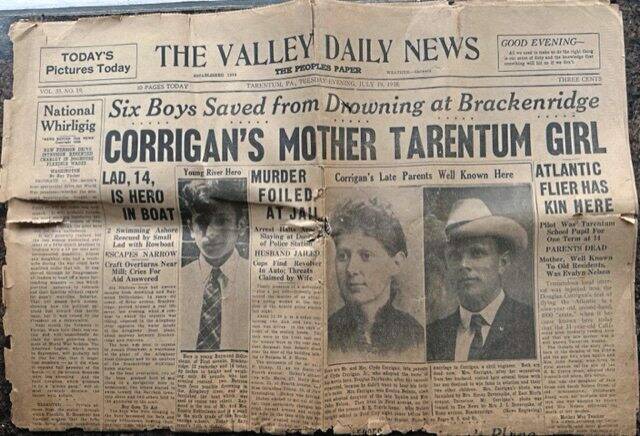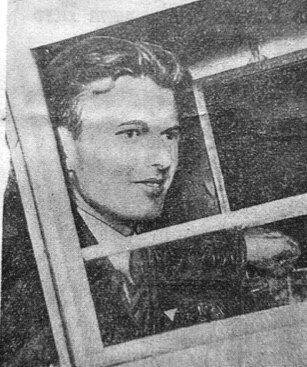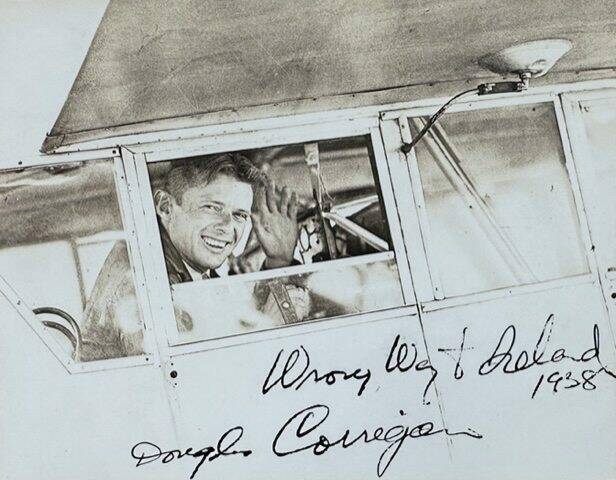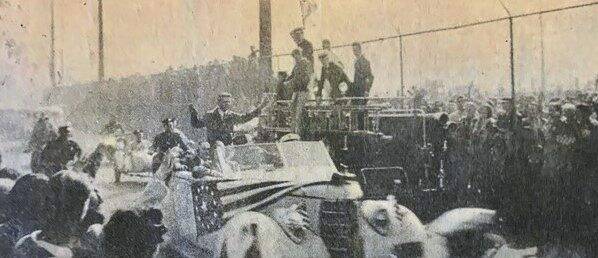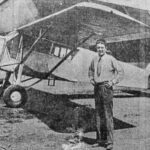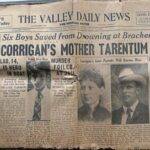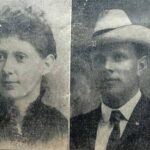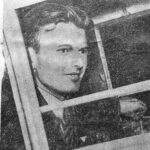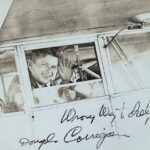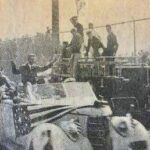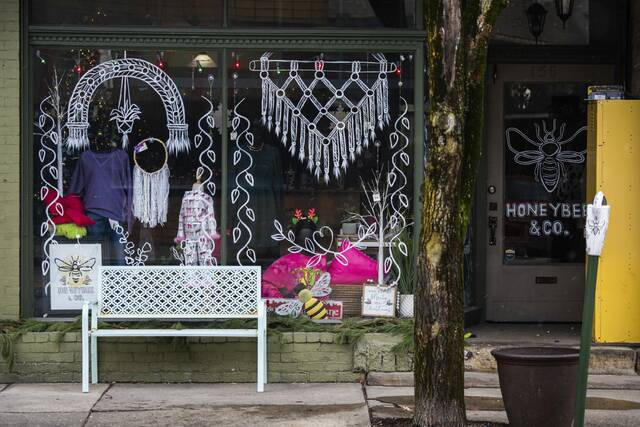National Wrong Way Corrigan Day is celebrated every year on July 17.
Named for Tarentum’s “adopted son,” the day commemorates the 1938 transatlantic journey of stunt pilot Douglas Corrigan, who made an unauthorized flight between Floyd Bennett Field in Brooklyn, N.Y., and Ireland.
Corrigan has ties to the Alle-Kiski Valley. His mother, Evelyn Nelson, was a school teacher from Tarentum.
Born on Jan. 22, 1907, Corrigan was christened Clyde Corrigan after his father. Following an acrimonious divorce from her husband, Evelyn began calling her son Douglas after Douglas Fairbanks, her favorite actor. The boy’s name eventually was legally changed to Douglas.
Corrigan moved to Los Angeles with his mother, brother and sister. He dropped out of school after the ninth grade and began doing construction work, but he was fascinated by flying.
Just after his 18th birthday, he purchased an airplane ride over the city for $2.50. He was so taken by the experience that he began taking flying lessons a week later and spent his free time with the mechanics at a neighboring airfield.
Corrigan soon was offered a job as an airplane mechanic with the prestigious Ryan Aeronautical Co., which operated the airfield where he learned to fly. Eventually, he was sent to work at its factory in San Diego.
While working with the company, Corrigan became involved with the construction of the Spirit of St. Louis for Charles Lindbergh. He was responsible for a major design change on the record-setting plane by extending the length of the airplane’s wing by 10 feet — thereby improving lift. He also worked on the installation of its fuel tanks and instrument panel.
In May 1927, the Spirit of St. Louis made the first solo nonstop transatlantic flight — from New York to Paris. Corrigan was present when Lindbergh took off from California to New York to begin his transatlantic journey. He was given the honor of pulling the wheel chocks for the takeoff.
Corrigan continued to earn money as a pilot and an airplane mechanic. He also worked as a stunt pilot and became famous for a trick called the chandelle, a series of a dozen tight spiral loops beginning close to the ground and ascending skyward. Chandelle is French for candle.
Corrigan remained so impressed by Lindbergh’s transatlantic flight that he decided to repeat it, this time flying to Ireland. It is believed he chose Ireland because of his heritage.
In 1933, Corrigan bought a used 1929 Curtiss Robin OX-5 Monoplane for $325. He immediately began modifying the aircraft for long-distance flights.
He scavenged parts from two used Wright Whirlwind J6-5 engines and assembled a 165 horsepower engine to replace the plane’s existing 90 horsepower one. He also installed additional fuel tanks to increase the aircraft’s range.
During this period, Corrigan set a cross-country speed record of 27 hours, 50 minutes on a flight from San Diego to New York. But even with extensive modifications to his aircraft and his cross-country record, all of Corrigan’s many applications for permission to make a solo nonstop flight to Europe were denied.
In 1937, the renewal of the license for his aircraft was denied because the extensive modifications he made were considered to have rendered the aircraft unstable for a safe flight overseas, though the plane still was granted certification for domestic cross-country flights.
On July 17, 1938, Douglas Corrigan left Floyd Bennett Field in Brooklyn to fly, according to his flight plan, to Long Beach, Calif. The plane was carrying 320 gallons of fuel and 16 gallons of oil.
Because of the weight of the fuel, Corrigan took off flying to the east because of his concern that he would be unable to clear the buildings on the western side of the airfield. Shortly after takeoff, he entered a cloud bank and said he became disoriented.
He found that the compass on the dash of his airplane was malfunctioning and had to refer to the compass mounted on the floor of the plane. He claimed heavy cloud cover and fog obscured his vision of the ground for the next 24 hours. He also stated that the dim light made it difficult to correctly read the floor-mounted compass.
When the sky cleared, he found himself over water and continued flying forward hoping to find a place to land. In the later part of this flight, a fuel leak flooded the floor of the aircraft with an inch of fuel, forcing him to open the windows for ventilation and puncture a hole in the floor with a screwdriver to drain the fuel.
This had to be done on the side of the cockpit, away from the exhaust manifold, otherwise the fuel could strike the hot exhaust and the plane would catch fire and explode.
At this point, he decided to increase his speed to use up the remaining fuel before it drained away. He eventually spotted land and made his way to the Baldonnel Airport in Dublin, Ireland.
When Corrigan arrived at the airport, he told officials: “My name’s Corrigan. I left New York yesterday morning headed for California, but I got mixed up in the clouds and must have flown the wrong way.”
As unlikely as his story was, he stuck to it for the rest of his life, and the feat earned him the moniker Douglas “Wrong Way” Corrigan.
The flight from New York to Ireland took 28 hours and 13 minutes.
While the Irish officials were deciding what to do about Corrigan’s unauthorized arrival in their country without a passport or visa, he became an instant celebrity.
Word of Corrigan’s daring flight quickly spread, and he became a sought-after celebrity of sorts for reporters and photographers. He received numerous telegrams of congratulations from people all over the world, including Howard Hughes and Henry Ford.
Corrigan also received a 600-word telegram from aviation officials in the United States listing the regulations he had violated with his flight. The Irish and American officials finally decided to ship him home with his airplane, which he had named Sunshine, aboard the ocean liner Manhattan.
When he arrived in New York, a ticker-tape parade was held in his honor with more that 1 million people in attendance — a bigger turnout than Lindbergh received.
Part of the reason Corrigan’s flight was so admired was because he accomplished the feat with a 9-year-old plane that he cobbled together using homemade parts and parts from other aircrafts. Meanwhile, the Spirit of St. Louis was a custom-built aircraft, and no expense was spared in its construction.
Corrigan’s daring, his Irish smile, his thumbing his nose at authority and his not-very-believable story won the hearts of the American public.
Locally, Corrigan was invited to be part of Allegheny County’s Sesquicentennial Parade. He flew his airplane into the county airport Sept. 2, 1938.
An estimated 100,000 people lined his route from the airport to Downtown Pittsburgh, and a banquet was held in his honor at the William Penn Hotel. The name of the main roadway through South Park was changed from Catfish Run to Corrigan Drive.
A parade was held in Tarentum in September 1938 to honor the borough’s “adopted son.” In addition to his mother being from Tarentum, Corrigan and his siblings had attended school in the Tarentum area for a short period, and he had relatives living in Alle-Kiski Valley.
One of his relatives is Audrey Graff of Lower Burrell, who provided much of the material and photographs for this article. Graff’s father, Raymond, was Corrigan’s cousin.
In other honors, the Burlington Liars Club, an American organization that has awarded a “World Champion Liar” title every year since 1929, gave Corrigan a lifetime membership. Corrigan also was invited to the White House by President Franklin D. Roosevelt. He starred as himself in the movie “The Flying Irishman” and wrote an autobiography titled “That’s My Story.”
Over the years, he even endorsed several “wrong-way” products, including a counter-clockwise watch. Sunshine, Corrigan’s airplane, is housed in the Planes of Fame Museum in Chino, Calif.
He died in 1995, at age 88, and is buried in Santa Ana, Calif.



